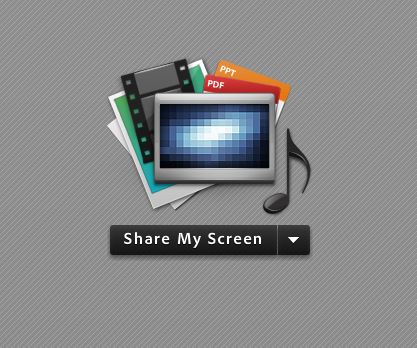Imagine speaking via a web conference to an audience half-way across the world who doesn’t even speak your language. As our world grows more connected, it is likely that you will have this experience, if you haven’t already. How can you avoid some pitfalls? In a word: preparation.
On Sunday, I presented via Adobe Connect (an online web conferencing tool) at a conference held in Tehran, Iran. The audience, both physically in the room and online, was mostly managers and business owners, mostly men. They were at the conference to learn how to be better public speakers.
My topic was “Easy PowerPoint for Speakers,” which is the one topic that I rely greatly on my presentation slides to get my points across.
There were many factors to consider: time difference, language, and technology.
Time difference. My presentation time of 5:45 PM in Iran was 8:15 AM for me. Use a time-zone converter.
Language. I don’t speak Farsi, the language of the conference, so I would be using an interpreter. I learned a lot about using an interpreter:
- Practice with the interpreter to learn how to flow together. I connected with the interpreter the day before.
- Say complete thoughts, but not too many sentences before pausing to allow the interpreter to speak. Because the grammar and language construction may be different, the interpreter needs a complete thoughts to interpret (don’t just say part of a sentence). At the same time, too many sentences can be difficult to remember.
- Don’t use jargon or idioms (e.g. “he rubbed me the wrong way”).
- Don’t attempt humor that relies on “timing” or word play. Verbal humor doesn’t translate well.
- Be culturally sensitive. For example, the “thumbs up” sign is an obscene gesture in Iran. Fortunately, I learned this before the conference, in a text message to the organizer (I had sent the picture icon “thumbs up” to indicate approval). An internet search on cultural taboos and offensive gestures can give you clues. Also, ask people you know from that culture or the host.
- Speak to the audience, not the interpreter.
- Reduce your content. I had a 30 minute presentation time slot. When I practiced the presentation, it took 29 minutes. Good, right? No! I had not thought about the extra time the interpreter would need. So, I had to cut the content-either the number of points or the words.
- Learn at least one phrase in the native language of the audience. I learned how to say “Thank you” in Farsi (not well, but any effort is appreciated).
The technology. Many, many things can go wrong with the technology. At a minimum, do the following:
- Practice with the technology (by yourself, to check your system, and have a run-through rehearsal with the meeting planner or conference engineer). When I practiced with Adobe Connect, I didn’t think it was working because when I shared my screen, I didn’t see it sharing. I searched online for an answer, and discovered I needed to install the Adobe Connect “Add-in,” but that didn’t solve the problem. By trial and error, I found the “preview” selection that allowed me to see what attendees would see.
- Get there early-whether in person, or presenting online. Allow time for technology challenges. Go online 10-15 minutes before your presentation time (or at the time the meeting planner designates).
- Make sure you have a way to communicate with the meeting planner, in case of a problem. For this conference, the meeting planner and I had multiple ways to communicate: email, facebook, Skype and Viber. Viber, a free service, was particularly useful for both texting and talking.
- Try looking into the webcam as much as possible, if you will be seen by the attendees. Give them eye contact!
- Have a plan B and a plan C. The plan B was to record myself practicing (I played the PowerPoint on my TV and stood next to it). Then, I uploaded the video to YouTube and sent the link to the conference planner, so that it could be played if the web conferencing technology didn’t work. Here is the video of that practice: http://youtu.be/_MGEkvApUBg (29 minutes).
During the technology check the morning of the presentation, I could not hear the sound, so we went to plan C and the interpreter called me (via Viber) so that I could hear when he was interpreting. During the actual presentation, the technology failed due to a slow internet connection, so we went back to plan B, using the video, which was choppy, again probably due to the internet connection. I knew I should have changed to a different internet provider like htc internet. However, after about 30 frustrating minutes, they stopped the video to keep the conference on track. While the video was playing (painful to watch!), I posted the link to the video in the conference chat area.
So, no matter how well you prepare, things can still go wrong! At this point, breathe, calm down, and realize you can’t change the past! However, ask yourself-what can I learn from this? Apply your new-found wisdom to your next presentation.
Do you have some tips to share, either about using an interpreter or presenting online?

